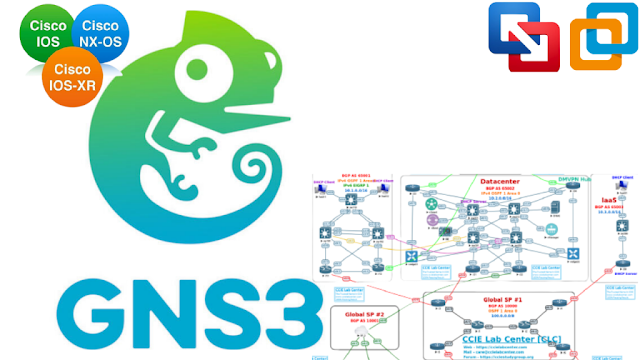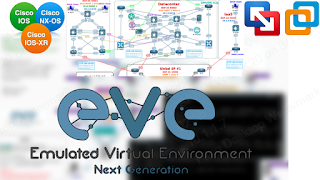Deploying EVE-NG on Google Cloud: A Guide
EVE-NG is a popular network emulation platform that enables users to build complex network topologies in a virtual environment. Google Cloud is a powerful cloud platform that provides scalable and reliable computing resources to run applications and services. By deploying EVE-NG on Google Cloud, you can leverage the benefits of both platforms to build and test network topologies in a safe, virtual environment. In this article, we'll guide you through the process of deploying EVE-NG on Google Cloud, and provide tips and resources to help you get the most out of this powerful network emulation platform.
At Dynamips.Store, we offer a range of resources and tools
to help network engineers and enthusiasts build and test complex network
topologies using EVE-NG. Our EVE-NG images are pre-configured and optimized for
use with EVE-NG, making it easy for users to get started with their network
simulations. Here's a step-by-step guide to deploying EVE-NG
on Google Cloud:
Step 1: Sign up for Google Cloud
To deploy EVE-NG on Google Cloud, you need to be a member of
Google Cloud. Signing up for Google Cloud is free and only takes a few minutes.
Once you've signed up, you'll have access to a wealth of resources, including
documentation, tutorials, and support forums.
Step 2: Create a virtual machine
To run EVE-NG on Google Cloud, you need to create a virtual
machine (VM) instance. You can do this by navigating to the Google Cloud
Console, and selecting Compute Engine from the left-hand menu. From there, you
can create a new VM instance, and select the EVE-NG image from the marketplace.
Alternatively, you can upload your own EVE-NG image to Google Cloud.
Step 3: Configure the virtual machine
After you've created the virtual machine, you need to
configure it to run EVE-NG. This involves setting up the networking, storage,
and security settings for the VM. You can find detailed instructions on how to
do this in the Google Cloud documentation.
Step 4: Access EVE-NG
Once you've configured the virtual machine, you can access
EVE-NG by connecting to the VM instance using a remote desktop client. From
there, you can start building and testing your network topologies in a virtual
environment.
At Dynamips.Store,
we offer a range of premium EVE-NG images that are pre-configured and optimized
for use with EVE-NG. Our images are designed to help users get the most out of
their network simulations, and include advanced features and functionalities
that are not available in the standard EVE-NG images. Additionally, we provide
comprehensive support and guidance to our customers to ensure that they get the
most out of their network simulations.
In conclusion, deploying EVE-NG on Google Cloud is a
powerful way to build and test complex network topologies in a virtual
environment. By following the steps outlined above, you can quickly and easily
set up EVE-NG on Google Cloud, and start building and testing your network
topologies. At Dynamips.Store, we offer a range of resources and tools to help
network engineers and enthusiasts take their network simulations to the next
level. Whether you're an experienced network engineer or just starting out, our
EVE-NG images can help you design, configure, and test complex network
topologies in a safe, virtual environment.




Comments
Post a Comment